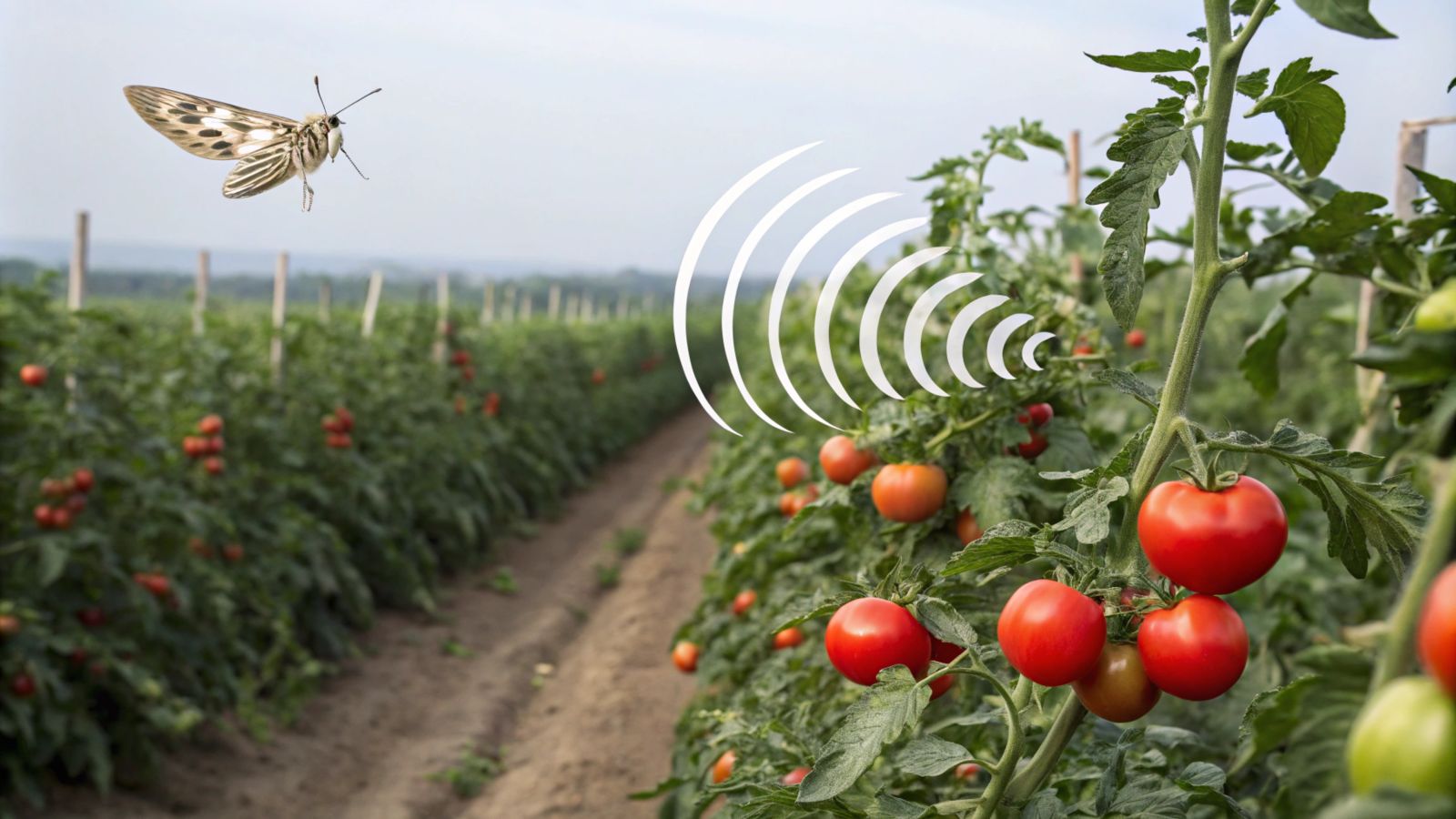Follow us on Google News (click on ☆)

Researchers from Tel Aviv University observed a surprising phenomenon: dehydrated or unhealthy plants produce ultrasonic clicks. The butterfly Spodoptera littoralis is not only able to hear these sounds but also to interpret them. This behavior has been documented in the journal eLife, revealing an unsuspected form of acoustic interaction between plants and insects.
Until now, it was known that plants communicated with insects through smells. However, the role of sound remained unknown. The team recorded these clicks using special microphones and demonstrated that certain animal species are sensitive to them. Female Spodoptera littoralis, in particular, adjust their egg-laying behavior based on the sounds emitted by plants.
In an experiment, butterflies were placed in an arena containing two well-watered tomato plants. One of them played recorded sounds that stressed plants typically emit. The result: the butterflies preferred to lay eggs on the silent plant. This discovery suggests that plant sounds indicate their health status and influence insect decisions.
According to the researchers, healthy plants represent a more favorable environment for larval development. Avoiding stressed plants could therefore improve the survival chances of the eggs. This adaptive mechanism reveals an increased sensitivity of butterflies to their environment.
The implications of this study extend beyond butterflies. Many plants emit sounds, and various insects may be able to perceive them. Scientists believe that this type of communication could be more widespread than previously thought, paving the way for a better understanding of interspecies interactions.
For the researchers, these findings raise new questions. How do these sound signals integrate with other cues, such as smells? Is this ability shared by other species? Field studies could provide answers and validate these observations under natural conditions.
Some criticisms remain. Experts point out that the link between these sounds and the number of eggs laid needs further exploration. However, the prospect of a sound dialogue between plants and insects already intrigues the scientific community.
This study sheds new light on plant bioacoustics, a rapidly growing field of research. It could also inspire agricultural innovations, such as acoustic sensors to monitor crop health.